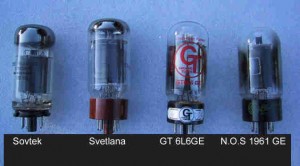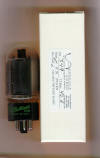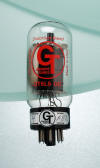“Made in U.S.A….” For much of what was produced in this country in the past, that term really indicated more than just a manufacturing location. It also indicated pride and true quality of products that were head and shoulders above the rest. In the world of musical instruments, “Made in U.S.A.” today still means the mark of the best quality, but still most expensive instruments made. This wasn’t always the case for many products from the mid-to-late ’70s as quality took a real slide while foreign-run companies made our products look like jokes. But, that said, it is nice to see that today, the quality of products that are made in the U.S. has again dramatically improved. In many aspects of production – for example, the boutique amplifier, guitar, and effects builders based in the U.S., it seems that the sense of pride and workmanship has returned in full form. I can’t think of a better time to have such a great selection of new gear from so many great companies. Yes, there will still be some who say older is “always” better, but I don’t buy that. There are some fantastic guitars, amps, and effects being produced, with strict attention to the details and you’ve got a heck of a lot more choice these days then you did back in the ’50s and ’60s.
While the argument itself is actually very rich in complexity – there are in fact many components and parts that aren’t as well made as they used to be and may never again – one area that was always clear was the superiority in sonics and quality of yesterday’s U.S. and Western European production tubes vs. today’s available tubes, produced mostly in Russia, China, and other Eastern European regions.
So when I heard the news that Groove Tubes had actually produced a U.S. made 6L6 tube, I was jumping for joy at the news. I contacted Aspen Pittman, president of Groove Tubes and he was kind enough to not only supply us with a sample pair of matched tubes, but also take some time out and answer some questions we had posed to him (the interview follows this story).
I decided this would have to be a fun test, somewhat time-consuming, but worthwhile so I decided to do a comparison between the Sovtek, Svetlana, the GT 6l6GE and a pair of N.O.S. GE’s from 1961. The Sovtek and Svetlana tubes are made in competing factories in Russia and are the most commonly used tube today in production amplifiers. Of course, to make things more interesting, testing a pair of N.O.S. GE tubes would be the ultimate test.
 Now, in defense of the new Groove Tube 6L6GE, it is for all intents and purposes based on one of the last GE tube types that was factory produced so its not an identical tube for comparison. With that said, I wasn’t so interested in comparing a late production GE tube to the Groove Tube 6L6GE just to see if they got that right. I wanted to see how the tube held up against what is one of the “legends” of tubes. Talk to tube experts and the early GE tubes as well as the RCA blackplates will be the tubes that will always be referenced as the best ever made.
Now, in defense of the new Groove Tube 6L6GE, it is for all intents and purposes based on one of the last GE tube types that was factory produced so its not an identical tube for comparison. With that said, I wasn’t so interested in comparing a late production GE tube to the Groove Tube 6L6GE just to see if they got that right. I wanted to see how the tube held up against what is one of the “legends” of tubes. Talk to tube experts and the early GE tubes as well as the RCA blackplates will be the tubes that will always be referenced as the best ever made.
So how about the test environment? Well, we want to listen to many things with tubes from the balance of tone across the frequencies, to the noise characteristics or microphonics present, to finally driving the tubes hard to get that great tube compression and drive. One amplifier stood out as the clear choice to test this tube pair. Fender’s “black face” Super Reverb. This is one of those classic amplifiers that has a very warm clean tone and then set to volume 5 starts to break up really nicely. When running the amp flat out on 10 or very near it, the amp just growls and has lots of gain on tap, but being a 40 watt r.m.s. rated amplifier, it’s not overbearingly loud as other amps can be. We used a model from 1967, all original components running its four alnico speakers, and still being one of the models to employ a tube rectifier. The amp was freshly serviced with matching N.O.S. General Electric preamp tubes all around.
I ran each set of tubes at volume 5 then 10 to listen to different characteristics. First I used a Strat, then a Les Paul which obviously has a hotter p.u. so it drives it differently.
All tubes were biased in relationship to the plate voltages and each tube type was infact within a similar range except for the n.o.s. GE 6L6 interestingly enough. That tube by the way was recently purchased through Upscale Audio, since I trust very highly their triple-point matching system and they sell to audiophiles primarily. I basically wanted to make sure I could get the best possible.
Let the competition begin!
Let’s be blunt… The Sovtek to my ears sounded the worst. It had weak to average bass response, dropped mids, and the highs were very piercing and sharp. This was evident at both volume levels. Kind of a mid-scooped type of sound. Where the Sovtek excelled is it had the most amount of given distortion/overdrive of all the tubes, but compared to the other tube types, it just wasn’t musically pleasing at all. I’m sure I’d perhaps appreciate this one more if I compared it with a cheaper Chinese tube but I didn’t want to bother for this test. All said, noise levels were o.k. with some extra noise noted after comparing the rest of the lot of tubes and microphonics were reasonably low. In fact overall, each tube type displayed very low microphonics, this is certainly a testiment to how they’ve ALL improved in quality through the years. But if I had to pick a loser in that category, it again would be the Sovtek.
Next up, the Svetlana had a much more full-bodied sound and was overall very balanced, but with a bit of mid-range emphasis. The overdrive at volume 10 with both guitars sounded pleasing – the Les Paul drove it really hard and gave a real present rock sound. Just sounded more like a tonally more well-balanced tube compared to the shrill and mid-absent Sovtek. Highs were present and even, and this tube didn’t exhibit nearly as much of the real “piercing” type of high notes that don’t even sound musical – it’s that part of the tone you wish you could throw away – kind of like having too much negative feedback within a circuit (or running the presence control too high). Anyhow, to my ears, the Svetlana 6L6 is the best of the current produced tubes and is in a league of its own compared to the Sovtek.
Then I moved to the N.O.S. GE from 1961. You know I had to keep listening to this one and A/B’ing again and again because I wanted to make sure that I wasn’t buying into any “psychological – it must be better since it’s N.O.S.” type of hype. Now after going back and forth, I’ve gotta say that the tone of this tube was the MOST balanced I had ever heard, nice bottom end mixed in with the mids and great highs with NONE of the piercing tones. It’s very strange, it’s not like the treble knob was reduced or that kind of thing to make the extra noisey-highs go away. Perhaps it had something to do with negative feedback or lack of it. My purpose here wasn’t to be a scientist and run these on scientific instruments but instead use my ears. Essentially these are beautiful-sounding tubes and the best I had heard so far. Distortion characteristics were also VERY smooth – and when you run it on 10 with a Les Paul, you really begin to appreciate this tube even more. Just great.
 So finally I moved over to the long-awaited Groove Tubes 6L6GE. While it is cosmetically different from the GE 1961 – again this is based on it being built from materials from a different tube era, as well as being cosmetically/internally different from the Svetlana, this tube to my ears responded almost IDENTICALLY to the Svetlana tube. It had that bit of extra mid curves and the way the tone of the tube was balanced was remarkably similar. I had to A/B them (the Svet and the GT 6L6GE) a few times just to make sure. Of course with the GT, you presumably are getting something that should last considerably longer than the Svet since the U.S.A. GE tubes were well known for their long-life. In fact U.S.A. produced GE tubes are perhaps the most long-lasting of all tubes when comparing the major power tube types (6L6, 6550, 6CA7/EL34).
So finally I moved over to the long-awaited Groove Tubes 6L6GE. While it is cosmetically different from the GE 1961 – again this is based on it being built from materials from a different tube era, as well as being cosmetically/internally different from the Svetlana, this tube to my ears responded almost IDENTICALLY to the Svetlana tube. It had that bit of extra mid curves and the way the tone of the tube was balanced was remarkably similar. I had to A/B them (the Svet and the GT 6L6GE) a few times just to make sure. Of course with the GT, you presumably are getting something that should last considerably longer than the Svet since the U.S.A. GE tubes were well known for their long-life. In fact U.S.A. produced GE tubes are perhaps the most long-lasting of all tubes when comparing the major power tube types (6L6, 6550, 6CA7/EL34).
 Presuming the Groove Tubes 6L6GE IS in fact a longer-life tube as it should be, that should make up for the difference in price if you’re looking at it versus say the Svetlana. Groove Tubes 6L6GE pairs sell for about $90 while Svetlana pairs are typically in the $50-$60 range. What may be tough though for now is that 6L6 N.O.S. GE tubes cost about the same as this new GT tube. In that respect, as long as I can buy a ’60s GE 6L6 matched pair for about $100, I’ll do so personally, but it won’t be like that forever with limited supplies. Also, when purchasing N.O.S. tubes, you don’t typically have much of a warranty if anything, on top of needing to work with a trustworthy supplier. I’ll tell you that while I have enjoyed my buying experiences from Upscale Audio, they didn’t have a large quantity of these tubes when I called them – in fact I bought the last pair and who knows if they were able to source more since then?
Presuming the Groove Tubes 6L6GE IS in fact a longer-life tube as it should be, that should make up for the difference in price if you’re looking at it versus say the Svetlana. Groove Tubes 6L6GE pairs sell for about $90 while Svetlana pairs are typically in the $50-$60 range. What may be tough though for now is that 6L6 N.O.S. GE tubes cost about the same as this new GT tube. In that respect, as long as I can buy a ’60s GE 6L6 matched pair for about $100, I’ll do so personally, but it won’t be like that forever with limited supplies. Also, when purchasing N.O.S. tubes, you don’t typically have much of a warranty if anything, on top of needing to work with a trustworthy supplier. I’ll tell you that while I have enjoyed my buying experiences from Upscale Audio, they didn’t have a large quantity of these tubes when I called them – in fact I bought the last pair and who knows if they were able to source more since then?
To sum up, while the The Groove Tubes 6L6GE is an excellent tube but more costly than its sonically-similar Svetlana tube, it is a good choice when you are looking for a tube that can be expected to have a longer life as well as being backed by its manufacturer. In this regard the 6L6GE is also less “risky” compared to perhaps buying New Old Stock tubes that may not be as they are advertised.
In fact, Groove Tubes really has to be applauded for taking the plunge and investment in making U.S.A. tubes again for us tube guitar amp guys. That’s very cool and it is also VERY expensive, hence the raised prices, and I wish them the best with it. More than anything, I’m excited about their EL34/6CA7 type that they’re working on to listen to them in my Marshalls.